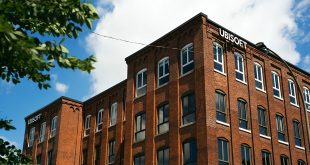What is the importance of utilising the right textures in a game like Rainbow Six Siege?
Siege takes place in the classic Tom Clancy universe. It’s a contemporary setting and we wanted the player to feel immersed in familiar real world locales.
Our rendering programmers integrated a fully PBR renderer. So the lighting and shading were physically-based and energy conserving.
However, during the game’s pre-production, we saw that the engine wasn’t enough. Our textures didn’t react well in different lighting conditions and the quality was inconsistent. The whole texture pipeline was in need of an overhaul. It became my mandate. I looked at published papers and at the competition at the time.
In the end, after discussing with our rendering leads, we approached the texturing process by acquiring scanned data, using that data to create a material bank for use in Substance Painter.
How did working on Siege compare to previous Rainbow Six games?
On the art side, we have definitely evolved in terms of detail and realism.
However, Siege is a competitive shooter and we needed to make concessions to allow for gameplay to work well, as well as the 60fps performance.
This meant we couldn’t have much transparency or other fancy effects. We focused on lighting and materials mostly.
"We layered materials and blended them using layer masks. So we could easily do things like painted metal with scratches and chipping that would just reveal the metal underneath the paint."
Lucas Granito, Ubisoft Montreal
What key tools and methods did you use when designing and implementing the textures in Siege?
We had this material bank full of what we called ‘base materials’. These consisted of things like plastics, metals, drywall, paints, fabrics, woods, etc. Each material would have calibrated albedo, gloss, metalness, cavity, height and normal maps.
We then layered the materials in Substance Painter and blended them using layer masks. So we could easily do things like painted metal with scratches and chipping that would just reveal the metal underneath the paint. Then we could add dirt, grime, dust and so on using the same process of stacking them and using masks to reveal them.
This became the process. Layering calibrated materials and spitting out the result into output textures.
It was an awkward transition for many, but most of our texture artists got the hang of it and became ‘material layering experts’ in the end. Doesn’t sound glamorous but I think the results are pretty great.
Many of Siege’s textures are used to visually inform players of important gameplay mechanics, such as destructible walls. How did you ensure that these clearly communicated their respective natures?
As a rule, for walls and floors we wanted the player to intuitively know what was or wasn’t destructible. Also, we didn’t want a distracting UI to pop up in game kill the feeling of immersion. So we had to come up with a visual language.
Basically wood and drywall were destructible, but brick, concrete and metal were not. I think we succeeded –and the game is better for it.
What are the biggest trends currently impacting the use of textures in games – especially shooters?
Shooters are generally first-person, so when you get up close to a wall, your nose can pretty much touch it.
On Siege, we opted for 512px/metre resolution across all surfaces, which equates to one pixel of detail per 2cm.
Some games also use detail maps to add more detail when close up, but we couldn’t afford the shader complexity.
I should note that on high end PC we dropped a free 4K downloadable texture pack, which upped the resolution to 1,024px/metre and even higher on characters and weapons.
What has the new generation of console hardware allowed you to do in terms of texture implementation that you couldn’t before?
Well, for us, it was our RealBlast Destruction technology, the PBR lighting and post effects, and actually hitting a consistent 60fps on all platforms.

 MCV/DEVELOP News, events, research and jobs from the games industry
MCV/DEVELOP News, events, research and jobs from the games industry



